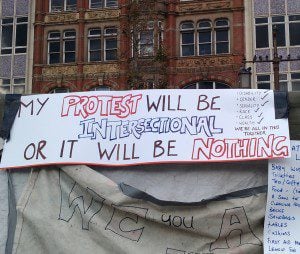Running through a days worth of international news on Tuesday I found a number that help us see just how diverse and complex concepts of citizenship, religion, and state have become worldwide.
In Nepal efforts to write a constitution have broken down completely. At issue? Is the state divided into geographical divisions, each of which is multi-ethnic? Or is it divided into ethnic divisions. Behind these quarrels are not only the politics of distribution of power and wealth, but the question of how Nepalese identify themselves in relation to the nation. Are they primarily residents of a region? Or are they primarily members of an ethnic group/caste? And does their government primarily address needs and wants arising from ethnic/caste affiliation, or the particular situation of their region? And yes, Nepal has a strong political faction wishing to assert the nation’s religious identity as well.
In India the caste system is both entrenched in the identity of citizens and citizens are addressed directly in relation to the caste. Primarily this has been through quota systems that insure that the so-called “scheduled castes” commonly know in the West as dalits or untouchables get their fare share of educational opportunities and government jobs. It is a step toward becoming a “post-caste” nation, but advances in that direction have been slow. Now recently a state government has also assigned quotas to religious minorities. The Indian Supreme Court overturned this, saying essentially that the Indian constitution didn’t recognize religious identity and inequality as having the same status as caste when it came to remedial government action. India is a secular society in this sense, even if its citizens are among the most religious in the world.
In Jordan the issue of the headscarf has come to the fore. Jordanian courts ruled that Christian women could be forced to wear a headscarf at work if the employer required it. For Jordanian Christians this amounts to “stealth Islamization,” a way of giving Islamic dress requirements and the citizens who follow them a privileged place in the public realm. Put another way, it is a not-so-subtle “branding” of Jordan as a Muslim country and its citizens as Muslims, even when they are not!
In France the headscarf has been banned in certain public venues, along with other overt religious symbols. Here we have an assertion that religion has no place in the concept of either state or the citizen in relation to the state.
If France appears extreme it nonetheless represents the trajectory of the modern West in terms of citizenship, religion, and the state. Charles Taylor notes in his 2008 book on Secularism, as we all might, that national identities (at least as expressed in government institutions) in the West have been steadily stripped of their religious component, even if public displays of religion remain and even thrive. But he also notes that the deep social forces that lead to this are not found across the globe. And that means that in nations like Nepal, and India, and Jordan and many others will continue to face demands, from religious minorities as well as majorities, for recognition that their religious identity be integral to the identity as citizens of the state. And they will continue to face conflicts (as we do in the US) over whether such demands by religious citizens are legitimate. Are they?











